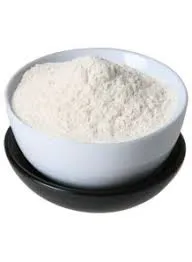
oct. . 21, 2024 09:37 Back to list
Exploring the Benefits and Applications of Hydroxypropyl Methyl Cellulose in Modern Formulations
Hydroxypropyl Methyl Cellulose An Overview
Hydroxypropyl methyl cellulose (HPMC) is a non-ionic, cellulose ether derived from natural cellulose. Its unique chemical structure imparts a wide range of properties that make it an essential ingredient across various industries, including pharmaceuticals, food, cosmetics, and construction. This article explores the production, properties, and applications of HPMC, showcasing its versatility and importance in different fields.
Production Process
The production of HPMC involves treating cellulose with a mixture of propylene oxide and methyl chloride under controlled conditions. The process typically begins with the extraction of cellulose from plant sources, such as wood pulp or cotton. Once pure cellulose is obtained, it undergoes etherification, where hydroxypropyl and methyl groups are introduced to the cellulose chain. The degree of substitution determines the viscosity and solubility of the final product, allowing manufacturers to tailor HPMC to meet specific application requirements.
Physical and Chemical Properties
HPMC is a white to off-white powder that is odorless and tasteless. Its solubility in water varies based on the degree of hydroxypropyl and methyl substitution. HPMC typically forms a viscous gel when dissolved in water, making it an excellent thickening and stabilizing agent. Notably, HPMC is not affected by pH changes, ensuring consistent performance in various environments. Its thermal stability also makes it suitable for applications that involve high temperatures.
One of the most remarkable features of HPMC is its ability to form a film, which lends itself to numerous uses. The film-forming ability is particularly beneficial in pharmaceutical formulations, where controlled drug release is desired. Additionally, HPMC is biodegradable, making it an environmentally friendly choice compared to some synthetic polymers.
Applications in Pharmaceuticals
In the pharmaceutical industry, HPMC serves multiple roles. It is commonly used as a binder in tablet formulations, enhancing the cohesiveness and integrity of the tablet structure. Furthermore, HPMC acts as a controlled-release agent, allowing for the gradual release of active ingredients over time. It is also utilized in ophthalmic solutions and contact lens formulations due to its excellent moisture-retention properties, which help in maintaining eye comfort.
hydroxypropyl methyl cellulose

The versatility of HPMC extends to being a stabilizer in emulsions and suspensions, ensuring uniform distribution of active ingredients. Additionally, it is often found in topical preparations, where it functions as a thickener, enhancing the texture and feel of creams and gels.
Applications in Food Industry
In the food sector, HPMC is recognized as a food additive and is often labeled as E464. It is widely used as a thickener, emulsifier, and stabilizer in various food products, including sauces, dressings, ice creams, and gluten-free products. HPMC’s ability to retain moisture helps preserve the texture and freshness of food items, making it a valuable ingredient in extending shelf life.
The clean label trend has led to increased interest in HPMC, as it is derived from natural sources and is considered safe for consumption. Its functionality also enables the formulation of low-fat and reduced-calorie food products by improving texture without adding significant calories.
Applications in Construction
HPMC is increasingly gaining traction in the construction industry, particularly in the formulation of cement-based adhesives and mortars. Its water-retention properties are critical in preventing the rapid evaporation of water from cement mixes, allowing adequate curing time and enhancing adhesion qualities. HPMC also improves workability, making it easier to apply materials on various surfaces.
Conclusion
Hydroxypropyl methyl cellulose stands out as a multifunctional compound with extensive applications. Its unique properties, such as thickening, emulsifying, and film-forming capabilities, make it invaluable across several industries. As demand for natural and biodegradable products increases, HPMC’s role is expected to grow, providing sustainable solutions while meeting various technical needs. With its versatility and effectiveness, HPMC continues to be a cornerstone ingredient in both traditional and innovative applications.
-
Versatile Hpmc Uses in Different Industries
NewsJun.19,2025
-
Redispersible Powder's Role in Enhancing Durability of Construction Products
NewsJun.19,2025
-
Hydroxyethyl Cellulose Applications Driving Green Industrial Processes
NewsJun.19,2025
-
Exploring Different Redispersible Polymer Powder
NewsJun.19,2025
-
Choosing the Right Mortar Bonding Agent
NewsJun.19,2025
-
Applications and Significance of China Hpmc in Modern Industries
NewsJun.19,2025







